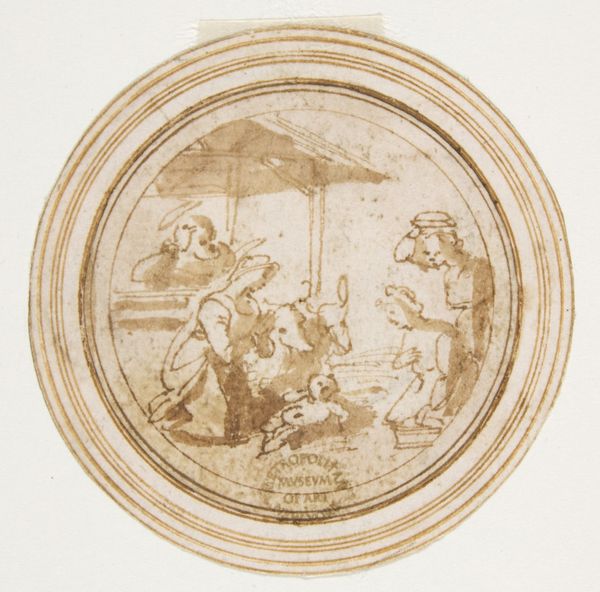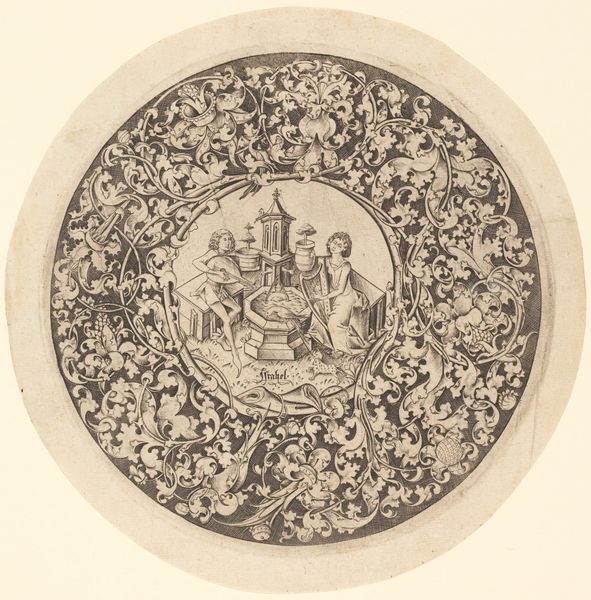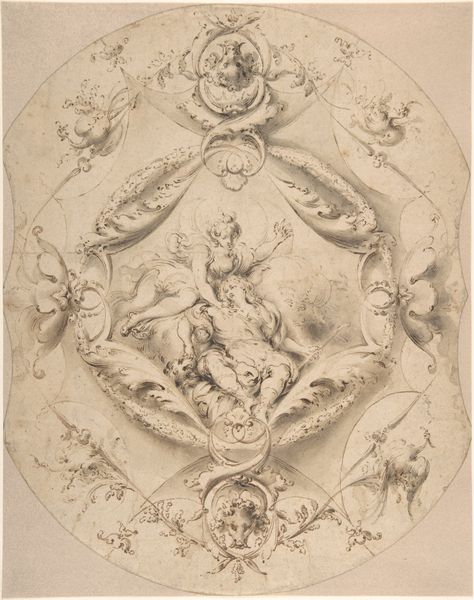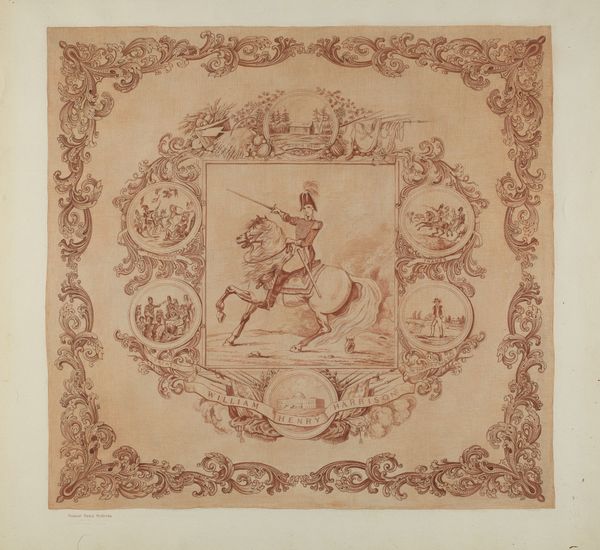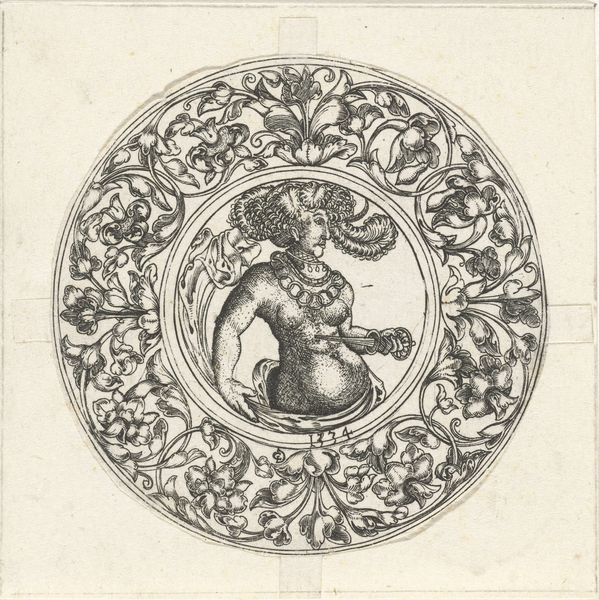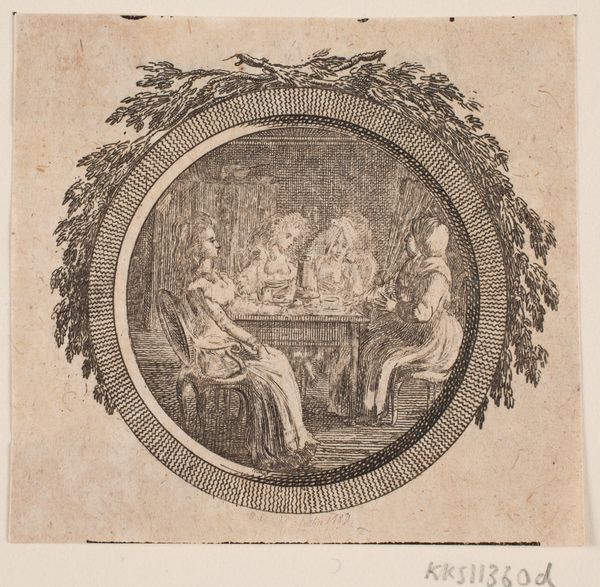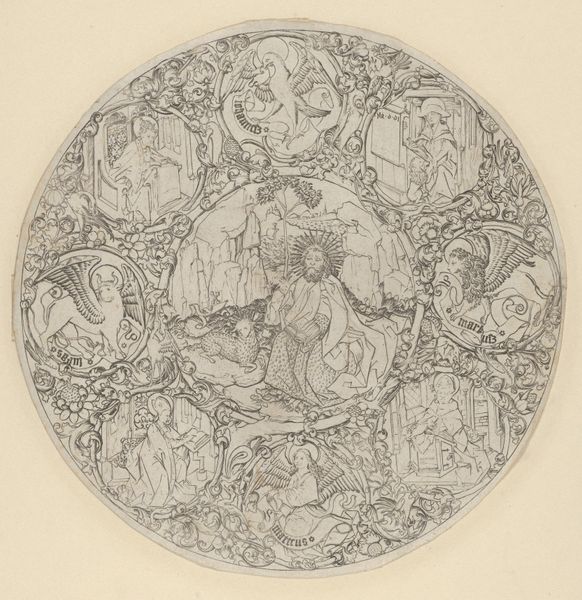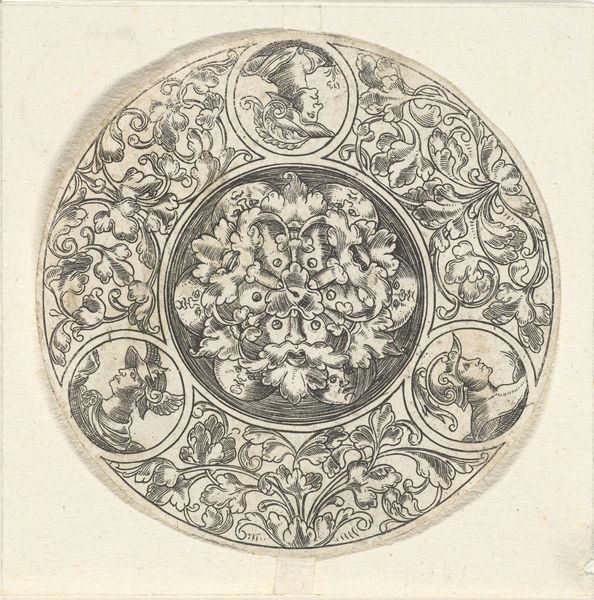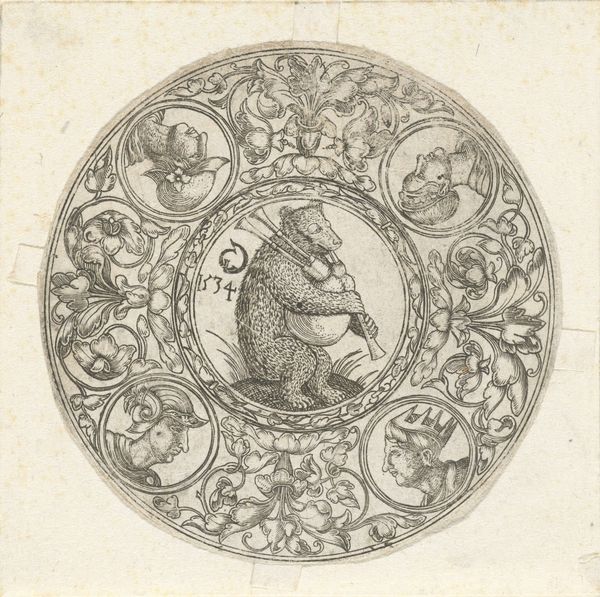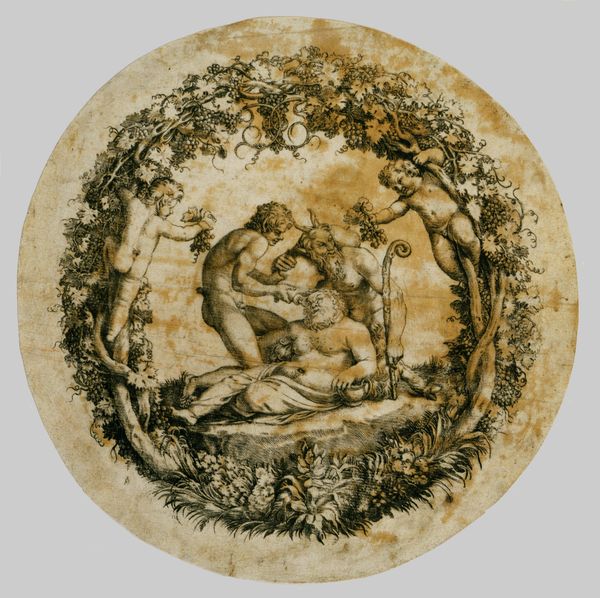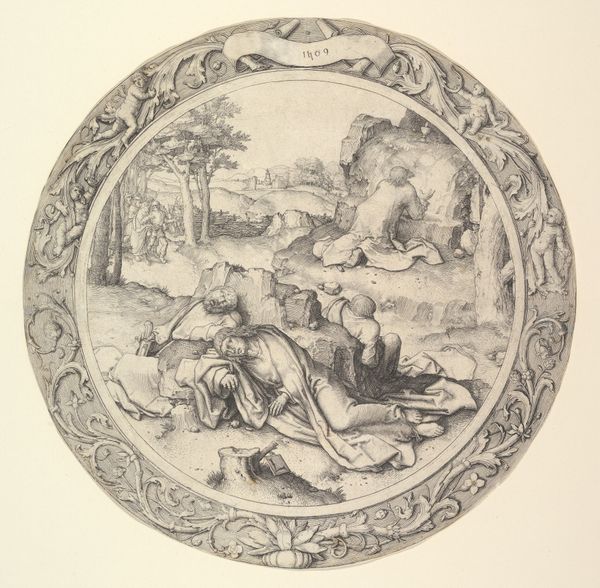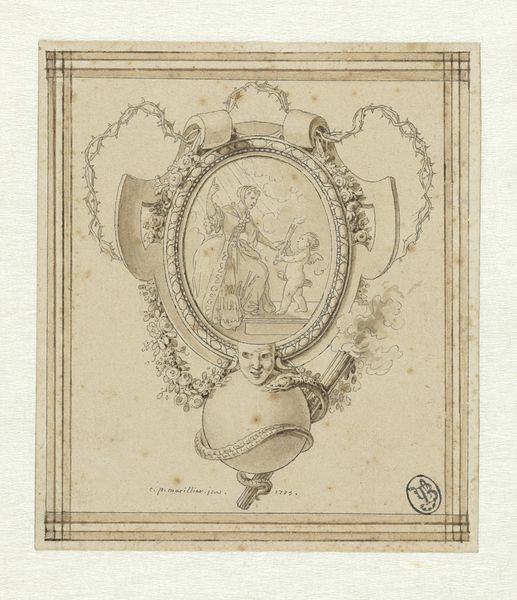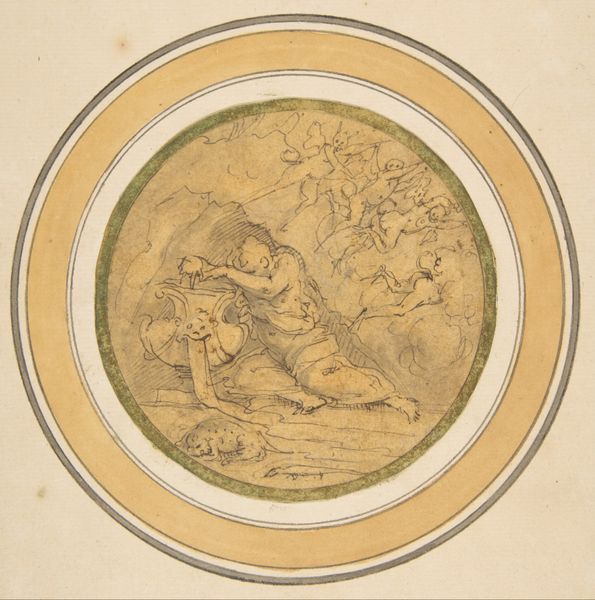
The Drunken SiIenus: Design for the "Tazza Farnese" 1599 - 1600
0:00
0:00
drawing
#
drawing
#
allegory
#
baroque
#
figuration
#
11_renaissance
#
history-painting
#
italian-renaissance
#
male-nude
Dimensions: sheet: 10 1/16 x 10 1/16 in. (25.6 x 25.5 cm)
Copyright: Public Domain
Editor: This is Annibale Carracci's "The Drunken Silenus: Design for the 'Tazza Farnese,'" created around 1599-1600. It’s a drawing, and I’m immediately struck by how it depicts this raucous scene within a very formal, almost classical, circular frame. What’s your take on it? Curator: The "Tazza Farnese," intended as a prestigious object, carries immense socio-political weight. Note how Carracci positions this design. The depiction of Silenus, the drunken tutor of Bacchus, within this circular format connects it to classical precedents – cameos, medallions – thereby elevating the status of the Farnese family, who would own the finished piece. It appropriates classical imagery for contemporary power. Editor: So, the "drunkenness" is almost secondary to the power play happening here? Is that correct? Curator: Precisely! Consider the cultural climate. The Farnese were major patrons of the arts. This "Tazza" would be a declaration, an advertisement of their sophisticated taste and wealth. It wasn't just about enjoying a beautifully crafted bowl; it was about visually reinforcing their social standing. Think of it as Baroque propaganda, in a refined artistic language. Who is meant to view this image? Editor: Definitely wealthy people, who are probably interested in claiming prestige like the Farnese, and those in the Farnese’s inner circle who appreciate classical influences and humor. That's such a clever detail. Curator: Exactly! We shouldn’t forget the visual cues. The controlled lines of the drawing are key to delivering that refined propaganda. It creates order and thus grandeur! Editor: I'm so used to thinking of Renaissance and Baroque art as purely aesthetic, but hearing you explain the social context is eye-opening. It's like seeing the image in a whole new light. Curator: That's the beauty of art history. It’s not just what you see, but who made it, why, and who was meant to see it. Editor: Thanks. I’ll definitely consider the target audience and historical factors with new eyes moving forward.
Comments
No comments
Be the first to comment and join the conversation on the ultimate creative platform.
